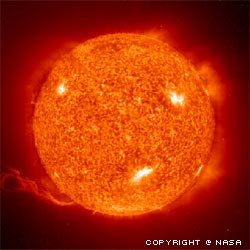3-in-1 Alternative Energy Car DIY STEM Kit
$19.99$14.95
 Stars are balls of gas that have condensed from large diffuse clouds of material due to gravity. Presumably after the big bang, large clouds of hydrogen would have been dispersed throughout the universe, and local pockets of higher density would have condensed into the first stars.
Stars are balls of gas that have condensed from large diffuse clouds of material due to gravity. Presumably after the big bang, large clouds of hydrogen would have been dispersed throughout the universe, and local pockets of higher density would have condensed into the first stars.
 'If you want to live a happy life, tie it to a goal, not to people or things.'
'If you want to live a happy life, tie it to a goal, not to people or things.'